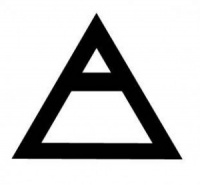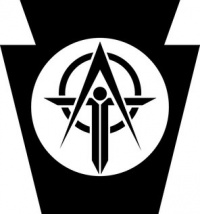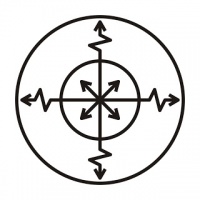Difference between revisions of "People of Khem"
m |
m |
||
| (3 intermediate revisions by the same user not shown) | |||
| Line 4: | Line 4: | ||
Adjective: Khemish<br> | Adjective: Khemish<br> | ||
Ethnic Groups<br> | Ethnic Groups<br> | ||
| − | + | Khem 67% (30% ser'ev, 32% da'kun, 18% al'ta, 20% da'kavo)<br> | |
[[St_Oz|Ozian]] 12%<br> | [[St_Oz|Ozian]] 12%<br> | ||
| − | + | [[Allied States|Bustian]] 8%<br> | |
[[Myroria|Kaihesse'zhi]] 5%<br> | [[Myroria|Kaihesse'zhi]] 5%<br> | ||
| − | [[ | + | [[Eluvatar|Eluvataran]] 4%<br> |
[[Jutensa|Jutensan]] 3%<br> | [[Jutensa|Jutensan]] 3%<br> | ||
Other 1%<br> | Other 1%<br> | ||
| Line 15: | Line 15: | ||
---- | ---- | ||
'''Khem Racial Profile:'''<br> | '''Khem Racial Profile:'''<br> | ||
| − | '''Eye Color:'''<br> <span style="color:Cyan">blue</span> = | + | '''Eye Color:'''<br> <span style="color:Cyan">blue</span> = ser'ev, <span style="color:YellowGreen">green</span> = da'kun, <span style="color:Indigo">indigo</span> = al'ta, <span style="color:Gray">gray</span> = da'kavo<br><br> |
| − | '''The Khem''' people are of a dark complexion with strong graceful bone structures | + | '''The Khem''' people are of a dark complexion with strong graceful bone structures. Due to a culture which strongly encourages physical readiness, they are rarely out of shape.<br> |
<br> | <br> | ||
| − | <br>[[File:Servile_Calling.png|200px|Servile]]<br> '''The | + | <br>[[File:Servile_Calling.png|200px|Servile]]<br> '''The Ser'ev''' have the darkest complexion and tend to have rough feet and hands from their barefooted labor of generations. They generally dreadlock their rough black hair as a symbol of their peace with their ideal of Ta. When the Libraries housed the hedonistic n'Ta Librarians and their grip was secure over the Holy Isles, they purchased and captured those they deemed beautiful or strong from across the beauteous Ta'Cef. This was a caste of laborers, favored house slaves, the hands to the twisted minds atop our shining cities.<br> |
| − | <br>[[File:Craftsmen Mark.jpg|200px|Craftsmen]]<br> '''The | + | <br>[[File:Craftsmen Mark.jpg|200px|Craftsmen]]<br> '''The Da'kun''' keep their straight black hair cut short and angular with certain careful geometries implying one craft or another. Their build tends to be slight by general comparison to the other Khemish races. Merchants, craftsmen and landowners. A strong seafaring nature has always had hold of this caste with their origins as fishmongers, toolmakers and sailors more often than farmers. During the height of Cefnori mercantile trade the Da'Kun were there. They have an international reputation as swindlers, penny-pinchers and deviously clever businessmen.<br> |
| − | <br>[[File:Da'Kavo Shield.jpg|200px|Da'Kavo]]<br> '''The Da'Kavo''' | + | <br>[[File:Da'Kavo Shield.jpg|200px|Da'Kavo]]<br> '''The Da'Kavo''' stand 6'4" on average over a foot taller than other Khems 5'2". They can be noted by a general thickness of build unseen in the other castes. This caste began with an ancient Khemish tradition in which they tainted their arrows with potent ritual strength hallucinogens that they might kill many and convert a few in bloodshed. Every act of war in days of yore added to their number and diversity.<br> |
| − | <br>[[File:Librarian_Mark.jpg|200px|Librarian]]<br> '''The | + | <br>[[File:Librarian_Mark.jpg|200px|Librarian]]<br> '''The Al'ta''' Their indigo eyes are complemented by long black hair often worked into intricate braids. These natives of the isles of Khem had until 1860 kept their temples in the Hyades Rainforest hidden from outside contact. Soon after these simple animistic people became the moral compass of the nation, promoting a resurgence of spirituality in the Khems. |
<br> | <br> | ||
| − | |||
| − | |||
<br> | <br> | ||
{{Navbox:Khem}} | {{Navbox:Khem}} | ||
[[Category:Khem]] | [[Category:Khem]] | ||
Latest revision as of 23:04, 3 March 2015
Population:
Nationality:
Noun: Khem
Adjective: Khemish
Ethnic Groups
Khem 67% (30% ser'ev, 32% da'kun, 18% al'ta, 20% da'kavo)
Ozian 12%
Bustian 8%
Kaihesse'zhi 5%
Eluvataran 4%
Jutensan 3%
Other 1%
Growth Rate: 0.021%
Khem Racial Profile:
Eye Color:
blue = ser'ev, green = da'kun, indigo = al'ta, gray = da'kavo
The Khem people are of a dark complexion with strong graceful bone structures. Due to a culture which strongly encourages physical readiness, they are rarely out of shape.

The Ser'ev have the darkest complexion and tend to have rough feet and hands from their barefooted labor of generations. They generally dreadlock their rough black hair as a symbol of their peace with their ideal of Ta. When the Libraries housed the hedonistic n'Ta Librarians and their grip was secure over the Holy Isles, they purchased and captured those they deemed beautiful or strong from across the beauteous Ta'Cef. This was a caste of laborers, favored house slaves, the hands to the twisted minds atop our shining cities.

The Da'kun keep their straight black hair cut short and angular with certain careful geometries implying one craft or another. Their build tends to be slight by general comparison to the other Khemish races. Merchants, craftsmen and landowners. A strong seafaring nature has always had hold of this caste with their origins as fishmongers, toolmakers and sailors more often than farmers. During the height of Cefnori mercantile trade the Da'Kun were there. They have an international reputation as swindlers, penny-pinchers and deviously clever businessmen.

The Da'Kavo stand 6'4" on average over a foot taller than other Khems 5'2". They can be noted by a general thickness of build unseen in the other castes. This caste began with an ancient Khemish tradition in which they tainted their arrows with potent ritual strength hallucinogens that they might kill many and convert a few in bloodshed. Every act of war in days of yore added to their number and diversity.

The Al'ta Their indigo eyes are complemented by long black hair often worked into intricate braids. These natives of the isles of Khem had until 1860 kept their temples in the Hyades Rainforest hidden from outside contact. Soon after these simple animistic people became the moral compass of the nation, promoting a resurgence of spirituality in the Khems.
| Peoples Confederation of Holy Isles of al'Khem Քհէմ Դափգէֆ Ոփկաէա Khem Ta'cef O'Gaea | |||
|---|---|---|---|
| Cities: | Apeiros, Carcossa, Azuth, Platholenes, l'Karevo, Kl'war, Azu'kaal, Mhe'n'war, Ta'kaal, Apenuur, Mk'war, Mk'agl, Mk'kaal, Nak'kaal, Rl'yeh, Hyaden, Barakan, Horun, Bara'kaal | Islands and Island Groups: | Apeiros, Mount Kallisti, Khem'al, Mausoka, Outlying Islands |
| People: | En'ku, Alkahest, Library Councilmen, Da'Kavo, Craftsmen, Revolutionary Figures | Hierarchy: | Peoples Glorious Libraries of Truth, Peoples Shining Army, Guilds, Slums, INFORMATION RESTRICTED CITIZEN |
| Society: | Religion, People, Standard of living, Khemish Language, Economy, Drug policy | Miscellaneous: | Scientific Achievements, Agriculture Philosophical Contributions, Art, Music, Architecture, Technology, Ecology |